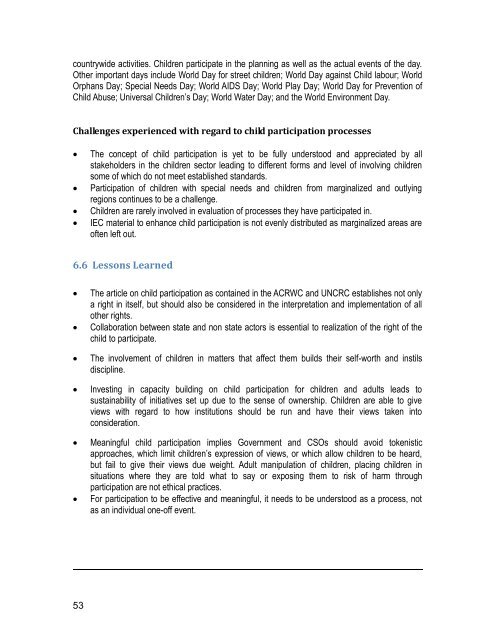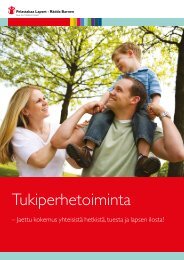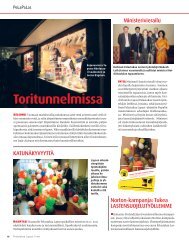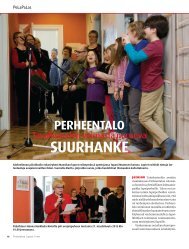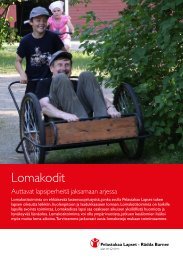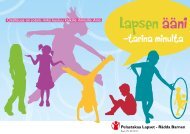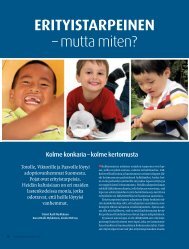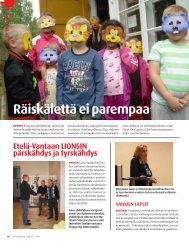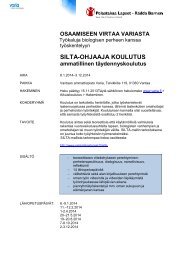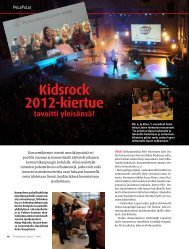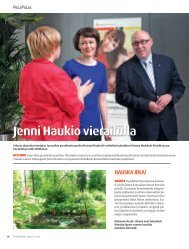Promoting child rights in Kenya - Pelastakaa Lapset ry
Promoting child rights in Kenya - Pelastakaa Lapset ry
Promoting child rights in Kenya - Pelastakaa Lapset ry
Create successful ePaper yourself
Turn your PDF publications into a flip-book with our unique Google optimized e-Paper software.
count<strong>ry</strong>wide activities. Children participate <strong>in</strong> the plann<strong>in</strong>g as well as the actual events of the day.Other important days <strong>in</strong>clude World Day for street <strong>child</strong>ren; World Day aga<strong>in</strong>st Child labour; WorldOrphans Day; Special Needs Day; World AIDS Day; World Play Day; World Day for Prevention ofChild Abuse; Universal Children’s Day; World Water Day; and the World Environment Day.Challenges experienced with regard to <strong>child</strong> participation processesThe concept of <strong>child</strong> participation is yet to be fully understood and appreciated by allstakeholders <strong>in</strong> the <strong>child</strong>ren sector lead<strong>in</strong>g to different forms and level of <strong>in</strong>volv<strong>in</strong>g <strong>child</strong>rensome of which do not meet established standards.Participation of <strong>child</strong>ren with special needs and <strong>child</strong>ren from marg<strong>in</strong>alized and outly<strong>in</strong>gregions cont<strong>in</strong>ues to be a challenge.Children are rarely <strong>in</strong>volved <strong>in</strong> evaluation of processes they have participated <strong>in</strong>.IEC material to enhance <strong>child</strong> participation is not evenly distributed as marg<strong>in</strong>alized areas areoften left out.6.6 Lessons LearnedThe article on <strong>child</strong> participation as conta<strong>in</strong>ed <strong>in</strong> the ACRWC and UNCRC establishes not onlya right <strong>in</strong> itself, but should also be considered <strong>in</strong> the <strong>in</strong>terpretation and implementation of allother <strong>rights</strong>.Collaboration between state and non state actors is essential to realization of the right of the<strong>child</strong> to participate.The <strong>in</strong>volvement of <strong>child</strong>ren <strong>in</strong> matters that affect them builds their self-worth and <strong>in</strong>stilsdiscipl<strong>in</strong>e.Invest<strong>in</strong>g <strong>in</strong> capacity build<strong>in</strong>g on <strong>child</strong> participation for <strong>child</strong>ren and adults leads tosusta<strong>in</strong>ability of <strong>in</strong>itiatives set up due to the sense of ownership. Children are able to giveviews with regard to how <strong>in</strong>stitutions should be run and have their views taken <strong>in</strong>toconsideration.Mean<strong>in</strong>gful <strong>child</strong> participation implies Government and CSOs should avoid tokenisticapproaches, which limit <strong>child</strong>ren’s expression of views, or which allow <strong>child</strong>ren to be heard,but fail to give their views due weight. Adult manipulation of <strong>child</strong>ren, plac<strong>in</strong>g <strong>child</strong>ren <strong>in</strong>situations where they are told what to say or expos<strong>in</strong>g them to risk of harm throughparticipation are not ethical practices.For participation to be effective and mean<strong>in</strong>gful, it needs to be understood as a process, notas an <strong>in</strong>dividual one-off event.53


